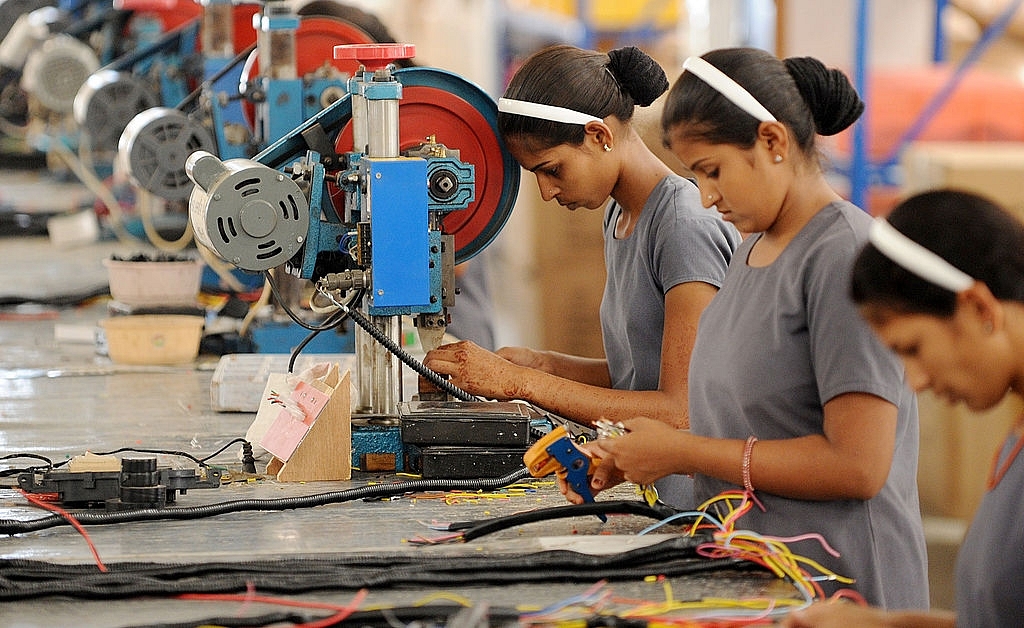Insta
How India’s Unemployment Problem Is Linked To Poor Wages, And Not The Availability Of Jobs

India manufacturing jobs (SAM PANTHAKY/AFP/GettyImages)
India's Labour Bureau recently released unemployment numbers for 2015-16.
Even as the economy grew at 7.6 per cent this year, the unemployment rate touched the 5 per cent mark, higher than the 4.9 per cent it recorded in 2013-14, when the economy was in a bad shape.
The new numbers show that women job-seekers have found it especially hard in the employment market. The unemployment rate was as high as 8.7 per cent this year, compared to 7.7 per cent in 2013-14, even as urban women found it ridiculously harder with an unemployment rate of 12.1 per cent.
Clearly, India has a jobs problem.
Or does it?
The chairman and co-founder of Teamlease, one of India’s leading providers of human resource services, Manish Sabharwal spoke to CNBC-TV18 yesterday (4 October) and had a different take on these numbers.
Sabharwal said India’s unemployment crisis was linked to wages, not jobs.
Anyone in India can get a job if he or she wishes so. There are all kinds of jobs easily available with a salary of Rs 5,000. But these jobs don’t find takers because such a small pay doesn’t prove anywhere near enough for living in a city. He also said that unemployment is not pervasive as a problem, as “poor cannot afford to be unemployed in India”. So most of them take up “marginal self-employment”.
Sabharwal said these unemployment figures were not relevant for India. These numbers are measured over too small a time frame and there’s not much that a government can do over “three days, three weeks or three months.”
Recording changes in unemployment figures over three to five years makes more sense, as it gives a better indication of the changing employment trends in India. Sabharwal said that the result of “the skill agenda, the urbanisation agenda, the ‘Make in India’ agenda and the ‘Ease of Doing Business’ agenda” could be better judged over a longer time frame and are, in any case, bound to create good jobs.
Interestingly, Sabharwal said underemployment, instead of unemployment, was the right place to look to introduce positive change in employment trends in India.
On the prediction made by the National Association of Software and Services Companies on automation reducing job growth in the coming years, Sabharwal said job growth would indeed decrease in the high-tech market, but not in sectors that largely drive India’s domestic consumption, namely sales, customer service and logistics.
India could easily create many more jobs in these areas, he said.
Introducing ElectionsHQ + 50 Ground Reports Project
The 2024 elections might seem easy to guess, but there are some important questions that shouldn't be missed.
Do freebies still sway voters? Do people prioritise infrastructure when voting? How will Punjab vote?
The answers to these questions provide great insights into where we, as a country, are headed in the years to come.
Swarajya is starting a project with an aim to do 50 solid ground stories and a smart commentary service on WhatsApp, a one-of-a-kind. We'd love your support during this election season.
Click below to contribute.
Latest